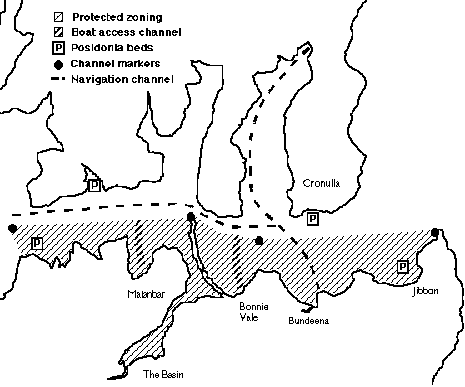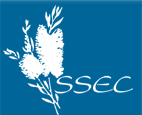A Marine Heritage Area? |
The Southern shores of Port Hacking combine unspoilt wetlands and marine grasses, shoals, and tidal waterways. They are interlinked with a national park of enormous cultural and natural heritage importance. Manyof the recreational uses of Port Hacking depend on its natural conditions. These include swimming, kayaking, small vessel sailing, and low impact foreshore use. Some uses have the potential to create adverse impact, such as noise or water pollution, overfishing, over-harvesting the foreshore, or physical change (such as dredging or construction of facilities).
Each of these uses is legitimate, provided that it does not prejudice the natural conditions that other users need. Conflicting needs of different users, particularly around natural conditions that are required for some low impact uses, is a by-product of the range of activities on the Hacking.
A plethora of agencies govern different aspects of the Port - Waterways Authority, National Parks & Wildlife Service, Sutherland Shire Council, Department of Land & Water Conservation and many others. What is needed is a management program to bring all these elements together.
What is the PHPS position?
PHPS believes that:
-
The ecological concern is systems health, not protection of isolated areas of seagrass, or bits of foreshore from over harvesting.
-
Natural ambience free of machine noise, the smell and taste of oil, boat discharges such as sewage, and trash is important for many users.
-
There should be significant areas where unprotected users are free of the risk, and the perception of possible harm from other users.
-
If substantial policing resources are not to be available, management controls have to be clear, extensive and readily enforced.
-
To open up areas to more intensive use, such as by dredging or boat ramps without controls against adverse impacts, is to abandon the natural values of the Port and to discount the interest of the low key users.
The Proposal
The PHPS has proposed the creation of the Tagary Heritage area involving
-
speed controls to protect the natural environment, unprotected users (swimmers, kayakers, surfers), and residents from machine noise nuisance.
-
Prohibition on the gathering of marine invertebrates along the foreshores.
-
Restrictions on anchoring over seagrasses within the Area, particularly the Posidonia beds.
-
Protection of the Basin
|

|
What would be the benefit?
For low impact users and nearby residents the benefits of this proposal are many and obvious. But what is the benefit for those who use the Port in other ways, such as fishing or boating?
Protecting the seagrasses and the foreshores these should help to halt any decline in fish numbers within the Hacking estuary.
Dredging is subject to the framework of the Memorandum of Understanding. The Tagary Area would deliver the effective environment protection and protection of other users which is required by this MOU, providing an assurance of ongoing support for navigation dredging. But beyond this, it is the knowledge that we are acting responsibly towards others who want to enjoy Port Hacking, and towards the children who will inherit it, which will be the greatest motivation to adopt such an initiative. |
| top of page |



